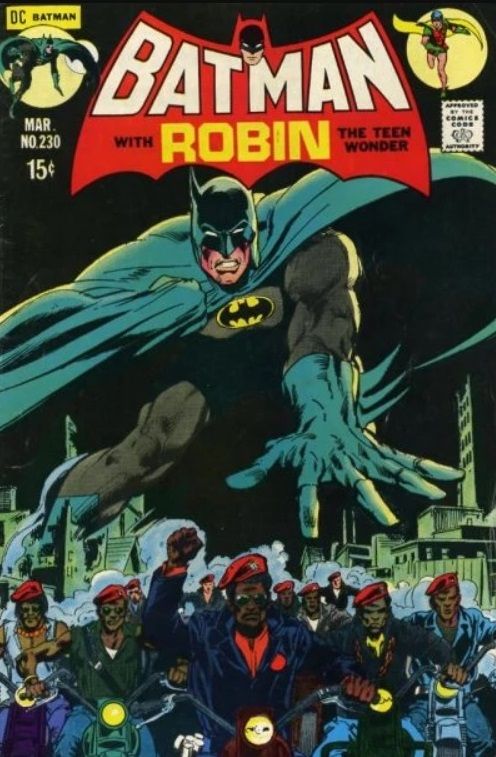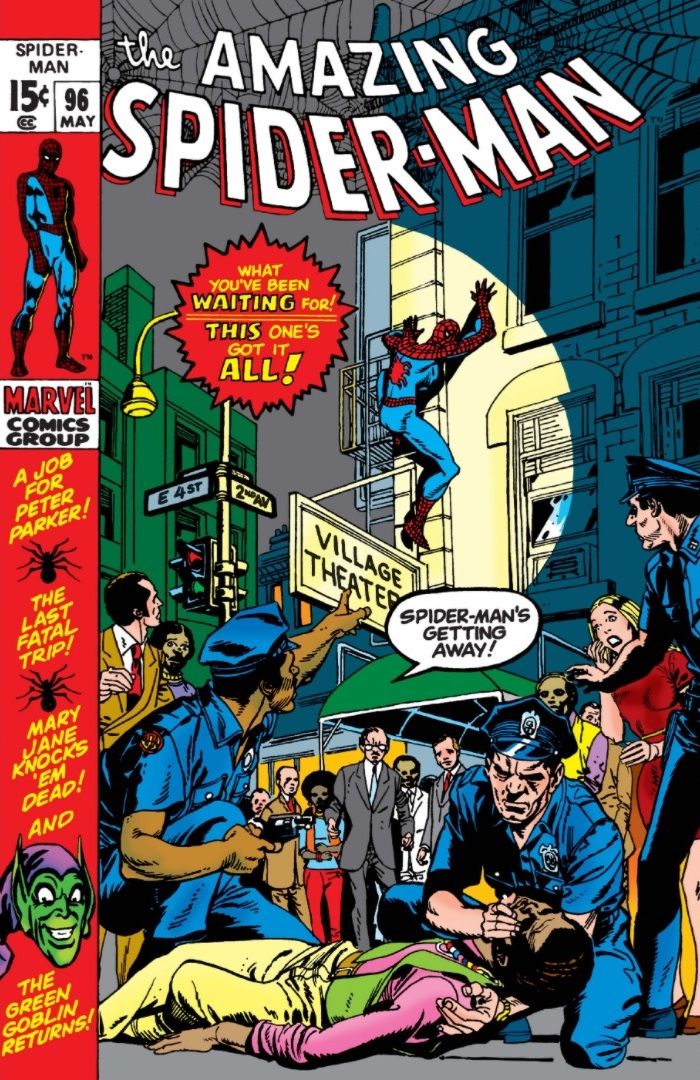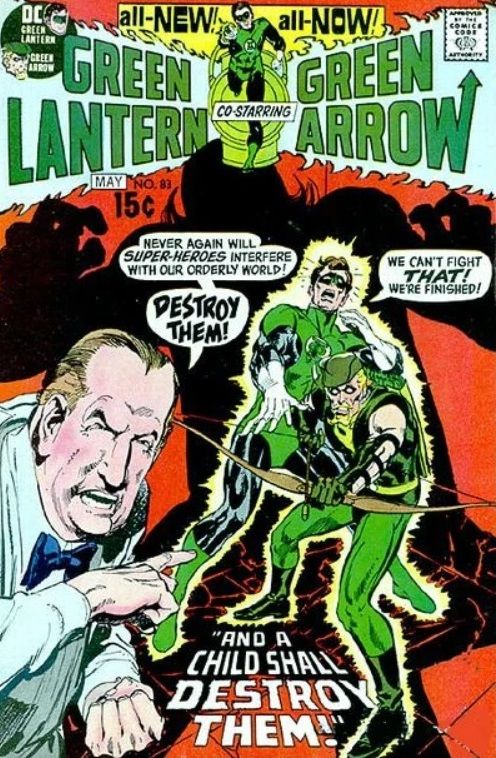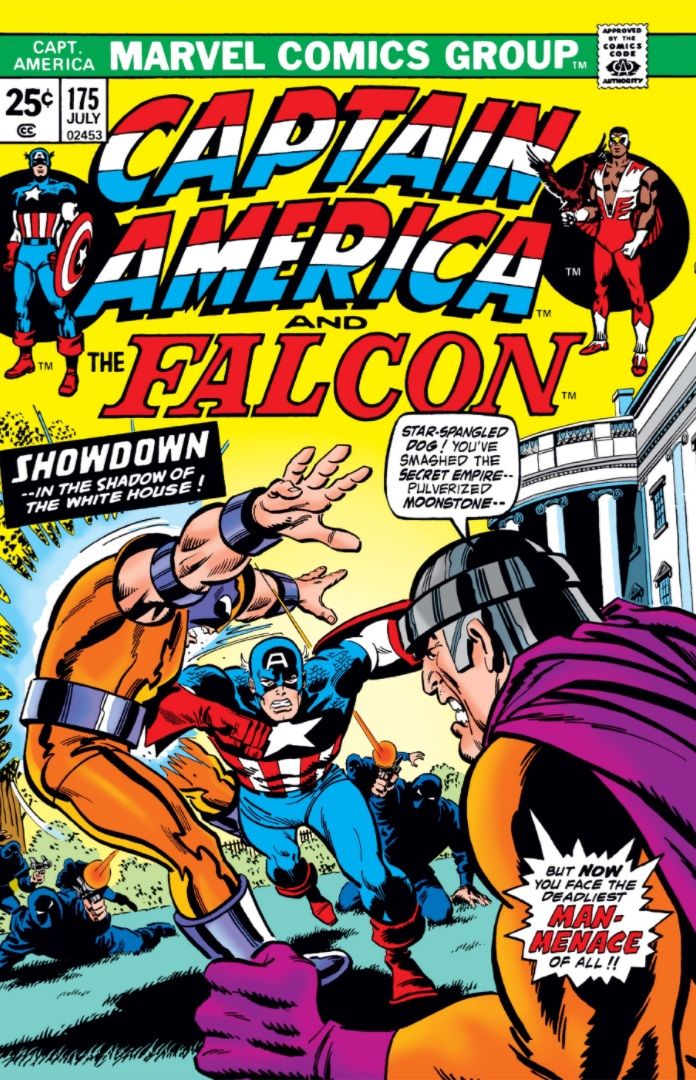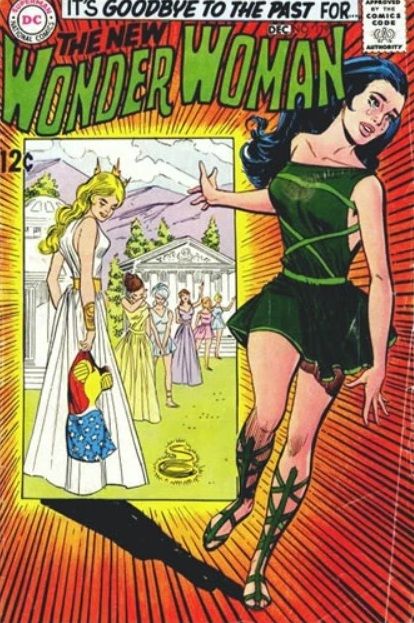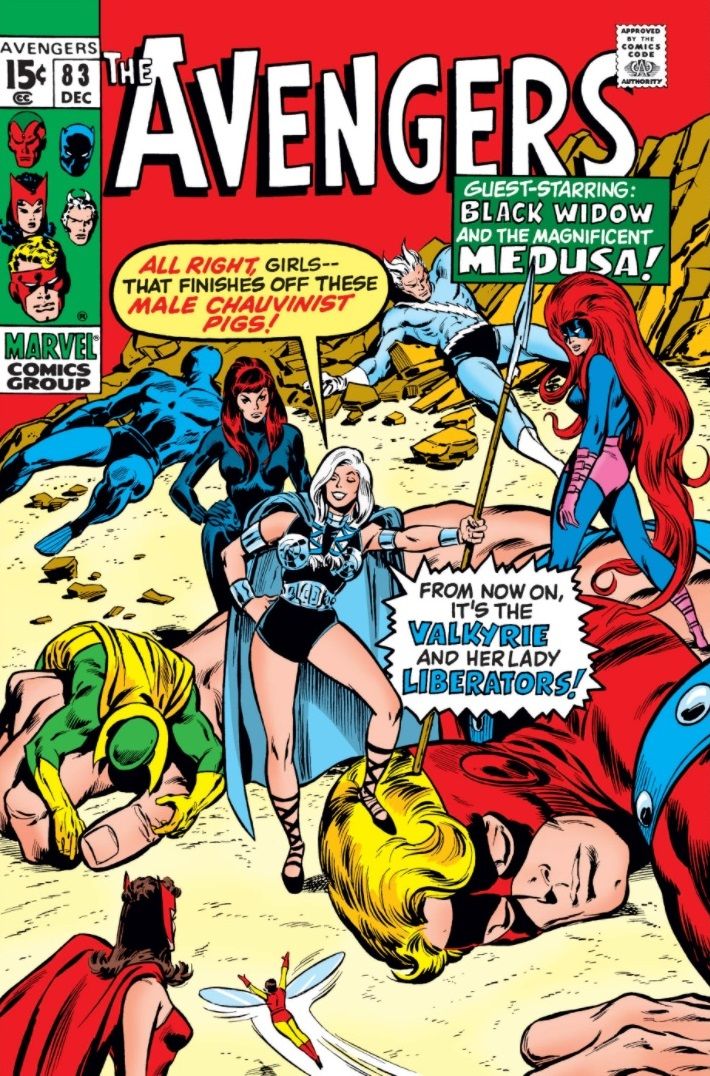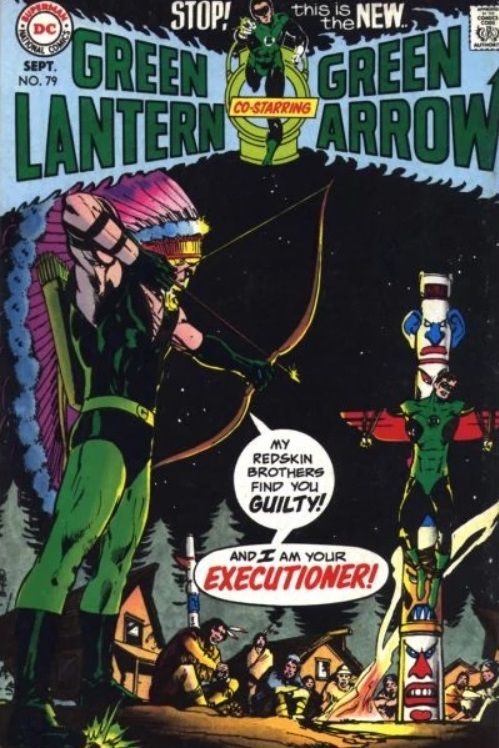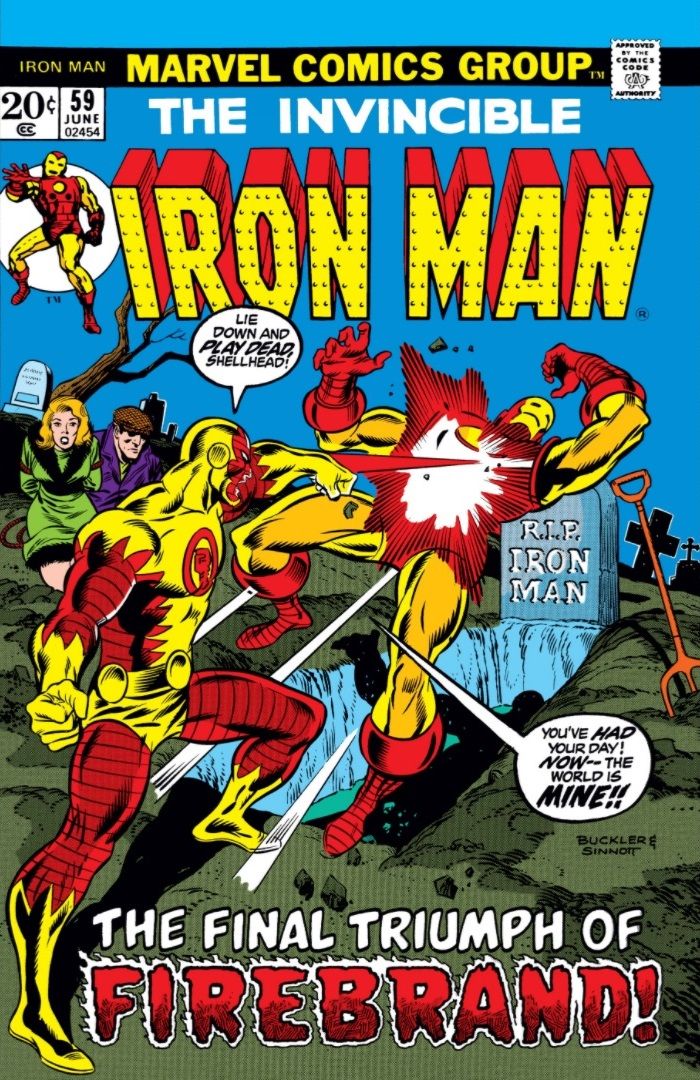Comics veteran Jim Starlin made headlines in late August by creating a new villain named Plunddo Tram. For the non-anagramatically-inclined among us, this character is a not-veiled-at-all caricature of America’s current president/dictator wannabe. If you don’t already know what Starlin thinks of 45, a single panel featuring King Plunddo will inform you.
This is hardly the first time comics have mocked a president or, more broadly, gotten political. In their earliest days, they were blatant anti-Nazi propaganda. Although they indulged in anti-communist propaganda in the 1950s, their political ardor was cooled by increased censorship. But by the mid to late ’60s, comic book creators were once again dipping their toes into more contentious territory. They didn’t do it very well, but there was definitely a more sincere (some might say preachy) tone than past attempts at dealing with serious issues.
I’ve discussed this topic before, but today I’d like to get a little more in-depth into the Bronze Age, which encompasses comics published roughly between 1970 and 1984. More specifically, I’m limiting this post to comics from 1970 to 1975, with an occasional stop in the late ’60s. This is when Marvel and DC really started to change attitudes in earnest and devote themselves to stories about issues that readers would find relevant, such as…
Civil Rights
As today, the ’60s and ’70s were a time of racial unrest in the United States. Comics readers were inundated with headlines about race riots, sit-ins, and the assassination of civil rights leaders. So it was only natural that the (largely non-Black) comics creators would want their (largely non-Black) characters to grapple with the same racial issues their readers were facing. How’d they do? BAD. It is VERY, VERY BAD, why are you even asking?
Avengers #73-74 (February-March 1970)
This is not the first time the Avengers confronted racism. In 1966, they tangled with the Sons of the Serpent, a stand-in for the Ku Klux Klan, for the first time. While the Avengers got some well-meaning but heavy-handed speeches in, the Sons of the Serpent’s leader turned out to be a communist stirring up trouble for his own purposes. This undercut the story’s point by attributing racism to foreign meddling rather than systemic American bigotry.
But don’t worry, the Avengers got a rematch against those slimy serpents! And this time, the baddies were led by an actual white American who made a living as a Fox News host by shouting racist trash on TV! Unfortunately, his partner was a Black TV host whose only “crime” up until the big reveal was being angry at the racists who tried to kill him. So…is Marvel’s message that being vocally opposed to racism is equally bad as being a racist?
Superman’s Girl Friend Lois Lane #106 (November 1970)
Lois has gotten into some messed up stuff over the years, but this is on a whole other level. To write a story about the Black community in Metropolis, Lois—rather than turning the story over to a Black reporter like a sensible person—uses a magic Super machine that makes her Black for a day. Gotta get that Pulitzer somehow! (Seriously, that’s her motivation.)
One would hope she’d at least learn a valuable lesson about the challenges Black people face. But no. Instead, a Black guy who was rude to her earlier learns not to be racist against white people. I’m pretty sure that’s the exact opposite of the lesson we’re supposed to be learning, but okay.

Drugs and “Real” Crime
Sure, comics still dealt with alien invasions, evil mutants, and the like. But starting in the late ’60s, they increasingly dealt with down-to-earth criminals like drug dealers and slumlords. Some even made a career out of it; when he wasn’t the Falcon, Sam Wilson was a Harlem social worker, and Black Panther temporarily gave up ruling Wakanda to become an inner-city schoolteacher.
Batman #230 (March 1971)
It’s easy to think of Batman as a “realistic” sort of crimefighter today. But when this issue came out, the campy (and amazing, I will hear nothing against it) ’60s TV show had only been off the air for three years. So it was still a surprise to see him squaring off against people protesting poor housing conditions. Batman, who never met a problem he couldn’t punch into submission, tells the protesters to stop being so violent and negotiate. This does not work at all. But he does solve a subplot about the murder of one of the gang leaders, which results in the surviving protesters all going to jail. That’ll teach those slumlords a thing or two! Good job, Batsy!!
Amazing Spider-Man #96-98 (May-July 1971)
This story hits us with a double whammy of Don’t Do Drugs. First, Spidey’s inner monologue is rudely interrupted when he has to rescue a young man who’s so high on drugs that he thinks he can fly. This leads to some speechifying from Spider-Man about how drugs are more dangerous than supervillains. Peter Parker’s friend Randy gets in on the action too, making it clear that drugs are not just “the Black man’s bag.”
This point is reinforced by the next issue. Peter’s white friend, Harry Osborn, has been taking pills to cope with life. Things get worse when he overdoses on a new, unspecified kind of pill and ends up in the hospital. Peter doesn’t say anything to his face about it, but his inner monologue is real condescending. He says twice that Harry is “weak” for resorting to drugs. By contrast, he has nothing but sympathy for Harry’s dad, whose mental problems cause him to become a bomb-wielding supervillain.
Executive BS
Richard Nixon was president from 1969 to 1974, which nicely coincides with the time period I’m covering in this article. That is not a coincidence. Nixon’s spectacularly unhelpful response to the Vietnam War (more on that later), to say nothing of the way his administration imploded after Watergate, contributed to the disillusionment and discontent that fueled comics creators of the era.
Green Lantern #83 (May 1971)
This series is also referred to as Green Lantern/Green Arrow, because it features both characters prominently. More to the point, it features them arguing about important topics of the day. This story has for its villains a school cook, Grandy, and a little girl, Sybil, with powerful psychic abilities. Grandy uses Sybil to bring “order” to the school’s unruly youth and to keep Green Lantern, Green Arrow, and Black Canary in line. You could certainly read political meaning into Grandy’s quest to make young people shut up at any cost. But a more obvious statement comes from artist Neal Adams, who designed Sybil and Grandy to look like President Nixon and Vice President Spiro Agnew, respectively.
Captain America #175-180 (July-December 1974)
Issue 175 marks the culmination of a long, hard storyline for Captain America. After being framed for murder by the Secret Empire (by way of a group subtly named the Committee to Regain America’s Principles [CRAP]), Cap discovers that the Empire’s leader is none other than Nixon himself. Nixon planned to take advantage of the turmoil caused by Watergate and Cap’s fall from grace to conquer America with a flying saucer. (He gets points for creativity, if nothing else.) When that doesn’t pan out, he dies by suicide before Cap can stop him.
Rattled, Cap spends the next few issues reassessing everything he thought he knew about America and himself. “Like millions of other Americans … he has seen his trust mocked,” and he decides that he just can’t be a symbol of a fractured nation and a self-serving government any longer. Instead, he becomes Nomad, the Man Without a Country (but With Great Cleavage).
Feminism
Apparently, getting the right to vote wasn’t enough for women, because they kept agitating for things like “fair wages” and “respect.” At least, I assume that was most creators’ attitude towards feminism, because that’s sure what comes across in their comics on the subject.
Wonder Woman #179-203 (December 1968-December 1972)
Hey, this should be okay, right? What better feminist icon than Wonder Woman, DC’s most powerful heroine? Funny story, that. Just as second-wave feminism was picking up steam, DC sent all of the Amazons to another dimension. Wonder Woman stayed on Earth, but she had to sacrifice her superpowers to do so. To continue her heroic career, she opened a fashion boutique and learned karate from an Asian stereotype. Progress!
To be fair, Wonder Woman #203 dealt with feminist issues more directly. Wondy went toe to toe with an unscrupulous department store owner who underpaid his female laborers. She got the store to close, at which point the exploited laborers turned on her for shutting down their only source of income. In the next issue, Wonder Woman regained her powers and went back to fighting gods and nonsense. That’s enough serious talk for one decade!
Avengers #83 (December 1970)
Sick of the male Avengers treating them like garbage (and make no mistake—the men absolutely deserve what they get in this issue), Wasp and the Scarlet Witch team up with Valkyrie, Black Widow, and Medusa to form the Lady Liberators. But rather than treating this as a much-needed learning opportunity for our heroes, the story reveals that Valkyrie was really the Enchantress in disguise. Because women with legitimate grievances against men are either a) villainous harpies, or b) hapless stooges of said harpies. The issue ends with Goliath decrying “that women’s lib bull,” and Scarlet Witch lets him live because a man wrote this comic.
Indigenous Rights
Up until now, Native Americans had largely appeared as stereotypes and joke characters in stories with titles like “Superman, Indian Chief!” (That very story, which appeared in 1950’s Action Comics #148, has Superman time travel to cheat the Native Americans out of the land Metropolis sits on, all to ensure their dickish descendant doesn’t get to own the city. Jeez, Supes.) The Bronze Age saw a series of more sincere attempts at dealing with Indigenous land rights…comparatively speaking.
Green Lantern #79 (September 1970)
Hello again, green men. Today, Lantern and Arrow find themselves embroiled in a land dispute between a group of Native Americans and a lumbermen’s union, both of whom want exclusive access to a particular forest. Green Arrow argues for the Native Americans while dressed as one, because the best way to stand up for a minority group is by disrespecting them. The issue ends with the union heads going to jail, and one of the Native Americans going to Washington to plead his case. This solves the immediate problem but, as the characters themselves point out, Native Americans still face disproportionate poverty and oppression, and the law doesn’t do much to protect them.
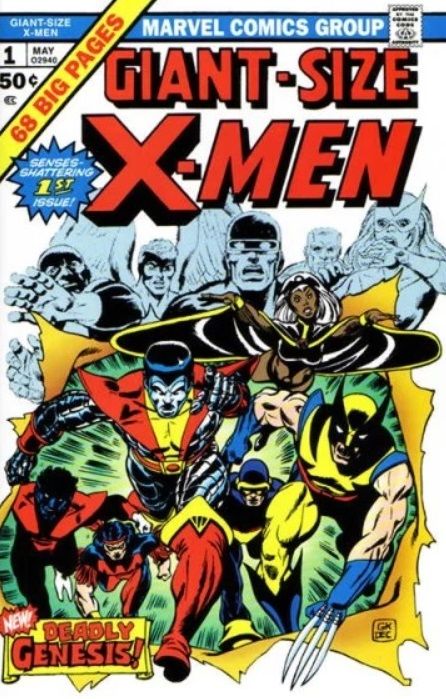
Giant-Size X-Men #1 (May 1975)
Because I have not spilled enough ink on this issue, let us revisit the sad, truncated tale of the Apache superhero Thunderbird. (If you can’t see him on this cover, he’s hiding between Colossus and Nightcrawler.) In his introductory scene, we see him lamenting the diminished state of his people and how they’ve been crammed onto reservations. He has legitimate grievances, but they are not even remotely followed up. Also not helping is his unnecessary use of racial slurs, which just makes Thunderbird look like the bad guy when, again, he has good reason to be upset. And it’s not like it gets better from here: Thunderbird dies two issues later in Uncanny X-Men #95 without ever getting to have a serious discussion about the effects of colonialism on Native populations.
The Vietnam War
America was involved in the Vietnam War for almost 20 years, starting in 1955. But it wasn’t until the 1960s that young people, sick of being drafted into a war they disagreed with, began protesting in earnest. And comic books protested right alongside them. Some heroes, like Daredevil and Captain America, befriended disabled Vietnam vets. Others, especially younger ones like Robin and Spider-Man, got more directly involved…though not in ways you may expect.
Batman #230 (March 1971)
Yes, again! While Bats was busy confronting protesters in the main story, Robin had a backup feature where he investigated the bombing of an ROTC building. (For non-Americans, ROTC is Reserve Officers’ Training Corps. They’re university-based trainers/recruiters, in essence. One imagines they were not that popular during the Vietnam years.) Robin spends a lot of time moaning about how neither the right nor the left likes him, presumably because he keeps drawing false equivalencies between the right and the left. This puts him on the same level as a similarly whiny police officer, which is not a great look.
Iron Man #59-78 (June 1973-September 1975)
These issues are like the culmination of everything I’ve been talking about. We see Tony Stark’s secretary having marital problems because her chauvinist husband thinks that her being educated and wanting a career is “women’s lib malarkey.” Then Iron Man tangles with his old foe Firebrand, whose disgust with American capitalism and the perceived ineffectiveness of peaceful protesting drove him to villainy. (He’s not fond of Iron Man, either—in Issue 48, Firebrand bizarrely called him an “Uncle Tom superhero.”)
Firebrand meets defeat thanks to his pacifist sister, Roxanne Gilbert. But when Tony tries to pay her a visit, he is rebuffed; Roxanne is repulsed by the “Asian blood” on his hands, and by all the money he made selling weapons for use in Vietnam. Tony had, in fact, gotten out of the munitions business back in Iron Man #50. In Issue 78, we find out why. While in Vietnam to test a new weapon, he saw a bunch of American soldiers and an entire Vietnamese village die horribly because of said weapon. Iron Man screams melodramatically for a bit before vowing to turn away from weapons and uncritical patriotism. Instead, he will focus on finding peaceful solutions to the world’s problems.
Like I said, Bronze Age comics didn’t do a great job of dealing with timely issues. You can tell the creators were trying to make meaningful stories, but they generally fell short. Why? In his book Comic Book Nation, Bradford W. Wright states that Marvel in particular received blowback for their increasingly liberal tone. This suggests the creators were caught between two ideologies. On the one hand, they wanted to appeal to hip, modern youth. On the other, they were alienating conservative readers. That could explain the indecisive “very bad people on both sides” conclusions drawn by many of these comics.
Then again, reader support far outweighed reader criticism. So why wouldn’t the creators go all the way and, say, condemn racists in general rather than pinning the blame on a very few individuals, or claiming that Black people were just as bad? Even DC’s cheesy ’50s PSAs managed that much. Was there something else going on?
I suggest the following: the creative teams on every single one of these comics were overwhelmingly white and male. Lack of diversity leads to lack of perspective. These creators may sympathize with liberal causes, but they do not have personal experience with them. To this lack we can attribute the less sensitive portrayals and comments, as well as the comic industry’s lingering discomfort with loud expressions of discontent against the establishment: the creators, in many ways, were the establishment.
I’m sure that if any of them were confronted with this theory, they would deny it. They would likely be uncomfortable with—even protest—the notion that they, too, were racist and sexist, and that they themselves were what civil and Indigenous rights activists and feminists fought against. But the evidence is right there on the page. We see them compensate for their feelings of discomfort by degrading independent female characters, and urging civility and moderation even in the face of life-threatening oppression. We see how their privilege allowed them to believe that both sides really were equal threats, and that problems like racism really can be traced back to a handful of troublemakers. From that view, “extremists” like vocal protesters probably did look unreasonable, even villainous.
For all their faults, these comics represent a turning point in comics history. They signaled that superheroes were once again willing to confront the day’s most pressing issues. It’s a shame they were not up to the challenge.
Source : Get With It, Man! A Quick-ish History of How Superheroes Relearned to Be Relevant

